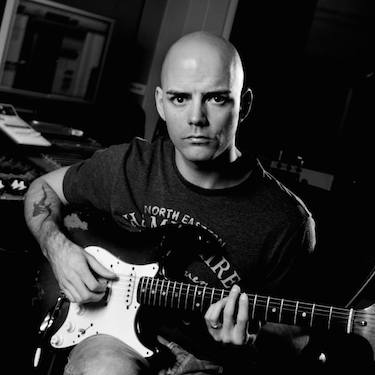|

UNITED KINGDOM: Of course, Judas Priest is among the small cadre of bands that might constitute the “founding fathers of metal” – including their genre-defining 1980 British Steel and 1982 Screaming For Vengeance, the band has sold over 45 million albums. With only a few hiatuses, the band has continued to rock arenas for decades, and their 2014, critically-acclaimed Redeemer of Souls earned the band a spot on the Billboard Top 10 for the first time ever. Tireless touring throughout 2015 culminated in a performance to 85,000 frenzied fans at the Wacken Festival, which was beautifully captured on video and audio for subsequent release. Battle Cry Live jumped to #1 on the US Billboard DVD Music Chart and analogous charts in Canada, Sweden, and Finland, and made the top 10 in numerous other countries around the world.
Having worked with the band on the vast majority of Judas Priest’s signature albums –including British Steel, Screaming For Vengeance, and Defenders of the Faith, along with most of their earlier live albums – producer Tom Allom was called back to the chair for Battle Cry Live. Allom brought in mixer, Jack Ruston, the team relying on the Metric Halo LIO-8 interface, and MIO Console software to seamlessly flip between a wide variety of monitoring systems.
“Tom has an encyclopedic knowledge of the band and their material,” explains Ruston. “He knows exactly what each and every track should be; where the heart of it is. He’s an exceptional producer. My job was to achieve sonically and technically his vision for the production. It was a lot like engineering or mixing a studio project, but with a slightly different set of challenges, chief among them that we needed a number of different but closely related versions of the mixes for release on different formats.”
He continues, “A project of this nature has a number of different facets. There’s the emotional, musical side. How do we take all this amazing energy that the band is delivering and, on the one hand, push it as hard as we can, squeeze out every last bit, but on the other hand avoid slipping up and harming it – to be aggressive enough but always respectful and careful with the recording. And then there’s the big logistical challenge. How do I handle mixing this vast swathe of audio, ninety minutes or whatever, and all these tracks, for three formats, Audio CD, Stereo DVD and 5.1 DVD, incorporating different, and changing edits to reflect what’s happening on the video side, keeping track of all the files, revisions, back-ups, and so on.”

Ruston did all of the mixes in the box. That was an essential part of his workflow, because he had to be able to move freely between different mixes and formats. For example, one minute he might be on the stereo audio CD version, and the next moment he was applying a change from the stereo mix to the 5.1 mix, but with slightly different automation. “We had a huge number of tracks,” he said. “For practical reasons we kept to a single timeline for each complete mix of the show, and sometimes we’d need to separate certain elements for individual songs. It just wouldn’t have worked on a physical desk in the same way. I don’t consider that a sonic compromise in the way that it might have once been. There are some extraordinary tools available like the Acustica Audio sampling processors that allow me to achieve a traditional analogue sound, while taking advantage of a digital working method. We also used the ADL Penteo Surround up-mixer plug-in for Pro Tools to enable us to create surround content from stereo sources. That was an essential processor and performed extremely well. I’m also a big fan of the Metric Halo software. ChannelStrip, for example, finds its way onto all my projects.”
For Battle Cry Live, the main function of Ruston’s Metric Halo LIO-8 was as a DA converter and monitor controller. “The amazing thing about the Metric Halo LIO-8 and the ULN-8 is that you can freely recall different MIO mixer states and monitor control setups all the way up to 7.1,” he said. “That made it really easy to keep switching between the different formats. When I was mixing for CD and DVD, stereo and surround, I was considering the broadest spectrum of playback systems for that material: it could be someone’s car, their phone, a terrible TV, a surround system that’s not optimally placed, or maybe incorrectly wired, or a really high-end professional A/V installation. So for me it was important to have a variety of speaker setups and reference systems for playback. The project was mainly mixed on Amphion One 18’s with an Amp 100, but we also wanted to be able to switch to Tom’s Genelecs, a pair of NS10’s, some Avantone Mix Cubes, and various sets of headphones. We had to deal with mono, stereo, and 5.1 setups. I love the fact that I have just one box – my LIO-8. One minute it’s a tracking interface, fed from a desk and outputting cue mixes, and the next minute those same outputs are a surround monitor controller. It’s extraordinarily well thought-out! There are very few monitor controllers, let alone interfaces, that offer that sort of flexibility, and none at that price that I can think of.”
Contact Metric Halo or your local Metric Halo Authorized Reseller to learn more about MH's complete legendary product line, and pricing and availability in your area.
As seen in ProSoundWeb and MixOnline.
Article Updated July 26, 2016 |